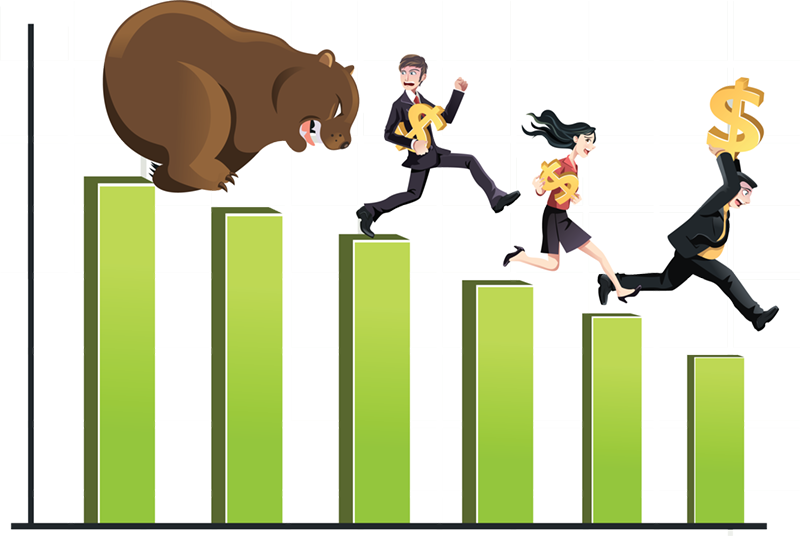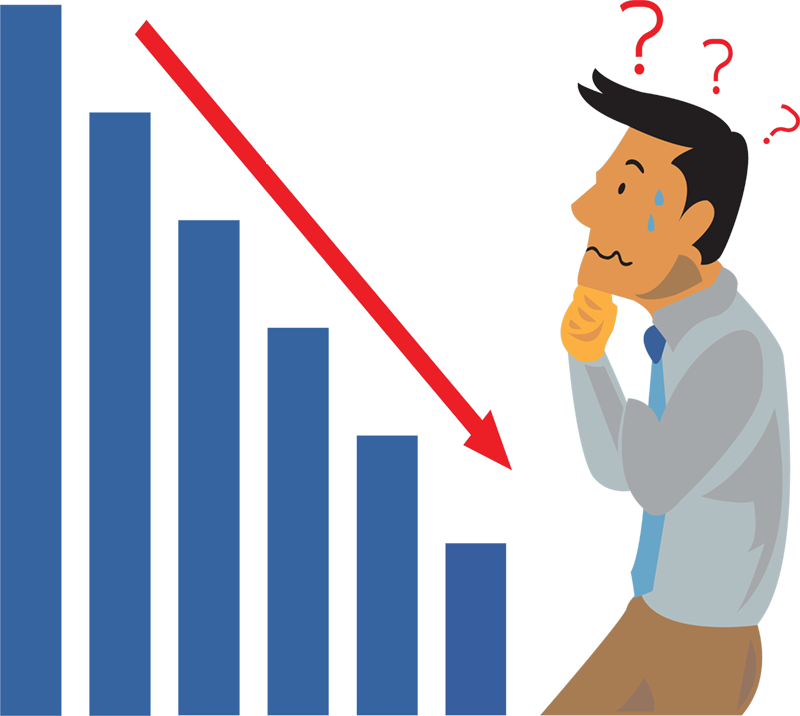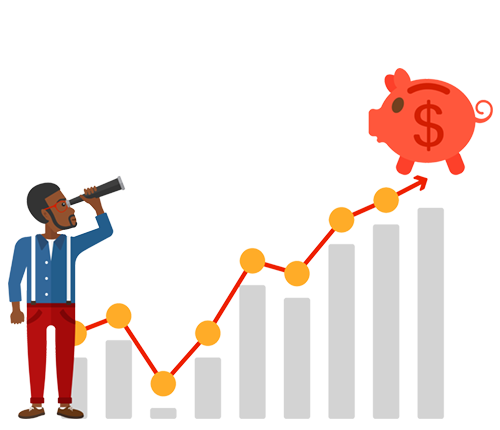TheAnswerIs.ca
Risk vs Volatility
Managing a Bear Market
Understanding the difference between risk and volatility will help investors prepare for and deal with steep drops in the stock market, or Bear Markets. A stock market “correction” is a drop of 10%, and a drop of 20% or more is called a Bear Market. We are well overdue to experience a Bear Market, although no one can say with certainty when it will strike, it may be just starting now, or it may not. Regardless, we must be prepared.
Risk has many definitions:
Oxford Dictionary - A situation involving exposure to danger.
Wikipedia - Risk is the possibility of losing something of value. Value can be gained or lost when taking risk resulting from a given action or inaction, foreseen or unforeseen.

Business Dictionary - The probability that an actual return on an investment will be lower than the expected return.
Merriam Webster - The chance that an investment (such as a stocks) will lose value.
In terms of the aptitude or head space required to be a successful investor, I think the Merriam Webster definition is the most helpful. Taking this definition further, some in academia and money management believe the definition of risk is better refined as a “permanent loss of capital”, and I subscribe to this school of thought.

Now Let’s Discuss Volatility:
Investopedia’s technical definition says volatility is a statistical measure of the dispersion of returns for a given security or market index. Not that helpful when dealing with head space issues.
A more useful layman’s definition is that volatility indicates how much and how quickly the value of an investment or market changes. Basically, a large price change in a short amount of time.
Ok so let’s see how understanding the difference between Risk and Volatility can help us create the head space to deal with a Bear Market.
When an investor buys a stock, the worst-case scenario is that the company goes bankrupt the next day, and the investor loses all his/her money. Now that is risk by any definition!
How do we manage this Risk?
The first step is easy, do not try to invest in individual stocks, but rather, simply invest in large capitalization ETFs with a minimum trading history of 5 years, such as, the S&P500 ETF, (this ETF provides exposure to the largest 500 companies in the USA). The chance of this ETF going to ZERO, is ALMOST zero, (i.e. a nuclear war scenario). Other than that, the chances of this or similar ETFs going to zero is extraordinarily small.
The second step is also easy. An investor MUST ensure that any money they decide to invest in the stock market MUST be left untouched for a MINIMUM of 10 years, and preferably much longer.
Is 10 years long enough to recover from a Bear Market drop of 20-50%?
Let’s get some perspective, the worst stock market crash of all-time was during the Great Depression, when the stock market (Dow Jones index) peaked in at 381 in 1929, (as opposed to about 25,000 today). The stock market then crashed, dropping from 381 to only 41 by mid 1932. A DROP of 89% OVER THREE YEARS!! Ouch.
Now pure chart watchers say the stock market did not reach 381 again until 1954, or 25 years after the initial 1929 crash. But this is not the WHOLE story.
Once one adjusts stock market returns for the deflation that occurred during the Great Depression, and adds back the 14% dividends that were being paid by companies at the bottom of the market, the stock market took a total of 7 years to fully recover from the 1929 crash.
Given it took 7 years for an investor to recover from the Great Depression stock market crash, a minimum investment horizon of 10 years is conservative.


So now let’s combine the first two easy steps
IF an investor ONLY purchases large capitalization ETFs with a minimum trading history of 5 years, (similar to the ETFs in TheAnswerIs.ca Model Portfolio), AND commits to a minimum investment horizon of 10 years, and preferably longer,
THEN an investor has achieved the THREE M’s:
Managed to Mitigate the Majority of Risk
Now the investor is in control of risk, instead of risk being in control of the investor.
Now that we have achieved the head space required to deal with Risk, the investor now only has to deal with Volatility, which is simply a large change in price in a short amount of time.
This third step is the hardest, and its all head space. IF we have Managed to Mitigate the Majority of Risk, investors can tell themselves that volatility, i.e. a large DROP in the stock market is actually a good thing. Young investors in particular should actually HOPE that the stock market goes DOWN in the short term, NOT UP!
What???
Let’s use a pair of shoes as an example. When people have been coveting that new pair of shoes and they finally go on sale at 20–50% off, they get excited and leap at the chance to buy them, but when stock market / ETFs drop 20–50%, people not only hesitate to buy more, sometimes they sell the ones they have!

Warren Buffett sums this illogical and contradictory behaviour up beautifully: “If you expect to be a net saver during the next five years, should you hope for a higher or lower stock market during this period? Many investors get this one wrong. Even though they are going to be net buyers of stocks for many years to come, they are elated when stock prices rise and depressed when they fall. This reaction makes no sense. Only those who will be net sellers of equities in the near future should be happy at seeing stocks rise. Prospective purchasers should much prefer sinking prices.”

Long-term investors need to reframe volatility associated with a large drop in the stock market. They need to tell themselves that a drop in the stock market, i.e. ETF unit prices, is like buying shoes on sale. Volatility should actually be considered a long-term investor’s friend, not a foe! Remember purchasing ETFs (shoes) on sale will lead to ETFs that provide higher long-term returns ( https://theansweris.ca/Q22-4.php) and higher dividend yields (https://theansweris.ca/Q22-5.php).
Yes, an investor may still feel a little sick to the stomach when they review their portfolio value statements during a severe Bear Market. But an investor that has the head space to know that they have Managed to Mitigate the Majority of Risk, combined with the commitment to leave the money invested in equities invested for a minimum of 10 years, will continue to invest during a Bear Market, and may even try to buy a little extra, thereby turning volatility into a long-term friend.
Volatility on its own is not risky, volatility is only risky if it is COMBINED with selling.
Be patient long-term investors.
